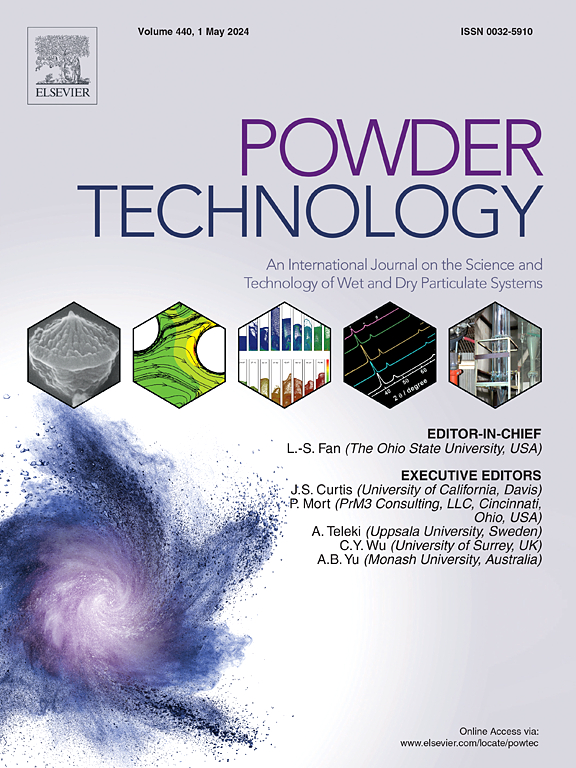Discharge electrode shape optimization for the performance improvement of electrostatic precipitator with six-branched spike discharge electrode and hexagonal collecting plate
IF 4.5
2区 工程技术
Q2 ENGINEERING, CHEMICAL
引用次数: 0
Abstract
Although various studies have explored improving electrostatic precipitator efficiency and discharge electrode shapes, optimization considering multiple shape variables simultaneously has not yet been extensively performed. In this study, a hexagonal collecting plate was used in a honeycomb-type electrostatic precipitator, and the effects of shape variables of a six-branched spike discharge electrode on collection efficiency were examined. A total of 42 discharge electrode shapes were selected based on the range of shape variables, and the optimal discharge electrode shape was determined by analyzing the collection efficiency of the electrostatic precipitator based on discharge electrode shape variables through numerical analysis. The collection efficiency increased with an increase in the length of the discharge electrode wires and a decrease in the interval between the wires in the flow direction. Further, the collection efficiency decreased with an increase in the flow rate of the aerosol because the particle residence time decreased. Experiments were conducted by preparing the discharge electrode shapes before and after optimization; the collection efficiency obtained through the numerical analysis was in good agreement with that of the experiment. Although the collection efficiency of the electrostatic precipitator was increased by approximately 20 % by optimizing the discharge electrode shape, the amount of power consumption and ozone generated were almost identical before and after optimization. The results of this study indicate that the optimization of various discharge electrode shapes is beneficial for significantly improving the performance of electrostatic precipitators while maintaining power consumption and ozone generation, potentially improving energy efficiency and reducing operational costs.

求助全文
约1分钟内获得全文
求助全文
来源期刊

Powder Technology
工程技术-工程:化工
CiteScore
9.90
自引率
15.40%
发文量
1047
审稿时长
46 days
期刊介绍:
Powder Technology is an International Journal on the Science and Technology of Wet and Dry Particulate Systems. Powder Technology publishes papers on all aspects of the formation of particles and their characterisation and on the study of systems containing particulate solids. No limitation is imposed on the size of the particles, which may range from nanometre scale, as in pigments or aerosols, to that of mined or quarried materials. The following list of topics is not intended to be comprehensive, but rather to indicate typical subjects which fall within the scope of the journal's interests:
Formation and synthesis of particles by precipitation and other methods.
Modification of particles by agglomeration, coating, comminution and attrition.
Characterisation of the size, shape, surface area, pore structure and strength of particles and agglomerates (including the origins and effects of inter particle forces).
Packing, failure, flow and permeability of assemblies of particles.
Particle-particle interactions and suspension rheology.
Handling and processing operations such as slurry flow, fluidization, pneumatic conveying.
Interactions between particles and their environment, including delivery of particulate products to the body.
Applications of particle technology in production of pharmaceuticals, chemicals, foods, pigments, structural, and functional materials and in environmental and energy related matters.
For materials-oriented contributions we are looking for articles revealing the effect of particle/powder characteristics (size, morphology and composition, in that order) on material performance or functionality and, ideally, comparison to any industrial standard.
 求助内容:
求助内容: 应助结果提醒方式:
应助结果提醒方式:


